Carolina Fortuna
The Energy Cost of Artificial Intelligence of Things Lifecycle
Aug 01, 2024Abstract:Artificial intelligence (AI)coupled with existing Internet of Things (IoT) enables more streamlined and autonomous operations across various economic sectors. Consequently, the paradigm of Artificial Intelligence of Things (AIoT) having AI techniques at its core implies additional energy and carbon costs that may become significant with more complex neural architectures. To better understand the energy and Carbon Footprint (CF) of some AIoT components, very recent studies employ conventional metrics. However, these metrics are not designed to capture energy efficiency aspects of inference. In this paper, we propose a new metric, the Energy Cost of AIoT Lifecycle (eCAL) to capture the overall energy cost of inference over the lifecycle of an AIoT system. We devise a new methodology for determining eCAL of an AIoT system by analyzing the complexity of data manipulation in individual components involved in the AIoT lifecycle and derive the overall and per bit energy consumption. With eCAL we show that the better a model is and the more it is used, the more energy efficient an inference is. For an example AIoT configuration, eCAL for making $100$ inferences is $1.43$ times higher than for $1000$ inferences. We also evaluate the CF of the AIoT system by calculating the equivalent CO$_{2}$ emissions based on the energy consumption and the Carbon Intensity (CI) across different countries. Using 2023 renewable data, our analysis reveals that deploying an AIoT system in Germany results in emitting $4.62$ times higher CO$_2$ than in Finland, due to latter using more low-CI energy sources.
RAG Enabled Conversations about Household Electricity Monitoring
Jun 03, 2024Abstract:In this paper, we investigate the integration of Retrieval Augmented Generation (RAG) with large language models (LLMs) such as ChatGPT, Gemini, and Llama to enhance the accuracy and specificity of responses to complex questions about electricity datasets. Recognizing the limitations of LLMs in generating precise and contextually relevant answers due to their dependency on the patterns in training data rather than factual understanding, we propose a solution that leverages a specialized electricity knowledge graph. This approach facilitates the retrieval of accurate, real-time data which is then synthesized with the generative capabilities of LLMs. Our findings illustrate that the RAG approach not only reduces the incidence of incorrect information typically generated by LLMs but also significantly improves the quality of the output by grounding responses in verifiable data. This paper details our methodology, presents a comparative analysis of responses with and without RAG, and discusses the implications of our findings for future applications of AI in specialized sectors like energy data analysis.
Towards Data-Driven Electricity Management: Multi-Region Harmonized Data and Knowledge Graph
May 29, 2024Abstract:Due to growing population and technological advances, global electricity consumption, and consequently also CO2 emissions are increasing. The residential sector makes up 25% of global electricity consumption and has great potential to increase efficiency and reduce CO2 footprint without sacrificing comfort. However, a lack of uniform consumption data at the household level spanning multiple regions hinders large-scale studies and robust multi-region model development. This paper introduces a multi-region dataset compiled from publicly available sources and presented in a uniform format. This data enables machine learning tasks such as disaggregation, demand forecasting, appliance ON/OFF classification, etc. Furthermore, we develop an RDF knowledge graph that characterizes the electricity consumption of the households and contextualizes it with household related properties enabling semantic queries and interoperability with other open knowledge bases like Wikidata and DBpedia. This structured data can be utilized to inform various stakeholders towards data-driven policy and business development.
Deep Feature Learning for Wireless Spectrum Data
Aug 07, 2023Abstract:In recent years, the traditional feature engineering process for training machine learning models is being automated by the feature extraction layers integrated in deep learning architectures. In wireless networks, many studies were conducted in automatic learning of feature representations for domain-related challenges. However, most of the existing works assume some supervision along the learning process by using labels to optimize the model. In this paper, we investigate an approach to learning feature representations for wireless transmission clustering in a completely unsupervised manner, i.e. requiring no labels in the process. We propose a model based on convolutional neural networks that automatically learns a reduced dimensionality representation of the input data with 99.3% less components compared to a baseline principal component analysis (PCA). We show that the automatic representation learning is able to extract fine-grained clusters containing the shapes of the wireless transmission bursts, while the baseline enables only general separability of the data based on the background noise.
Towards Sustainable Deep Learning for Multi-Label Classification on NILM
Jul 18, 2023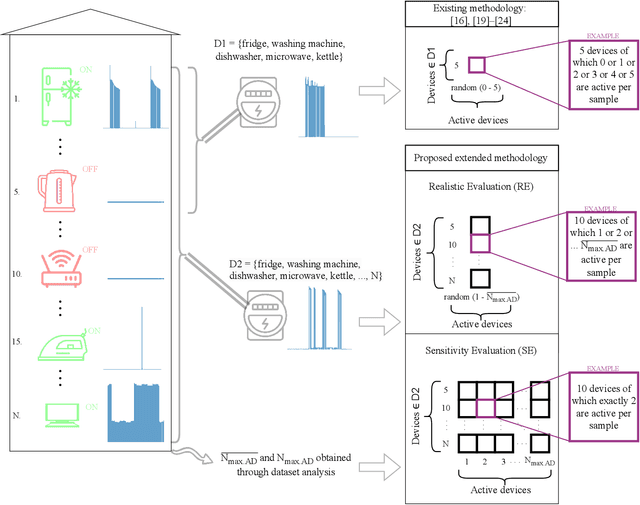

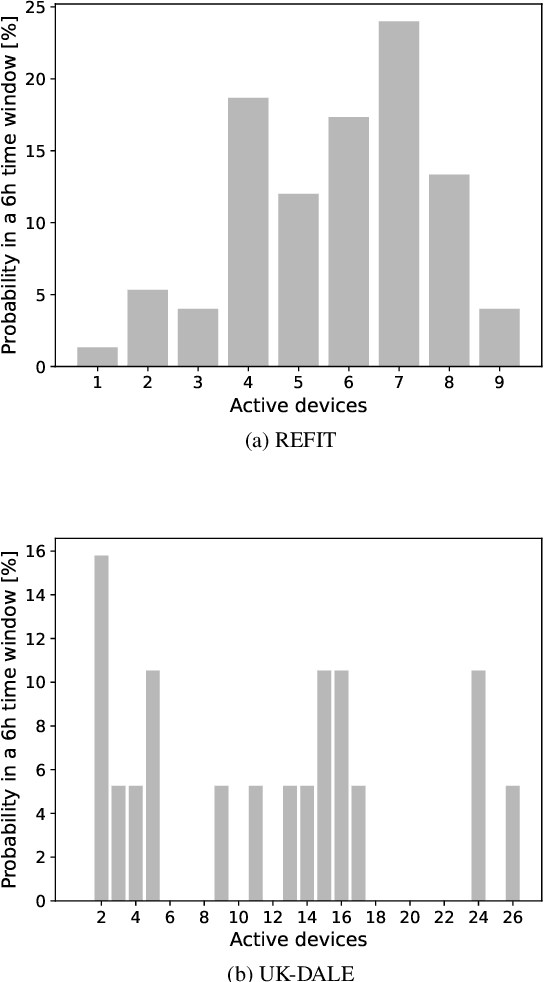

Abstract:Non-intrusive load monitoring (NILM) is the process of obtaining appliance-level data from a single metering point, measuring total electricity consumption of a household or a business. Appliance-level data can be directly used for demand response applications and energy management systems as well as for awareness raising and motivation for improvements in energy efficiency and reduction in the carbon footprint. Recently, classical machine learning and deep learning (DL) techniques became very popular and proved as highly effective for NILM classification, but with the growing complexity these methods are faced with significant computational and energy demands during both their training and operation. In this paper, we introduce a novel DL model aimed at enhanced multi-label classification of NILM with improved computation and energy efficiency. We also propose a testing methodology for comparison of different models using data synthesized from the measurement datasets so as to better represent real-world scenarios. Compared to the state-of-the-art, the proposed model has its carbon footprint reduced by more than 23% while providing on average approximately 8 percentage points in performance improvement when testing on data derived from REFIT and UK-DALE datasets.
XAI for Self-supervised Clustering of Wireless Spectrum Activity
May 17, 2023Abstract:The so-called black-box deep learning (DL) models are increasingly used in classification tasks across many scientific disciplines, including wireless communications domain. In this trend, supervised DL models appear as most commonly proposed solutions to domain-related classification problems. Although they are proven to have unmatched performance, the necessity for large labeled training data and their intractable reasoning, as two major drawbacks, are constraining their usage. The self-supervised architectures emerged as a promising solution that reduces the size of the needed labeled data, but the explainability problem remains. In this paper, we propose a methodology for explaining deep clustering, self-supervised learning architectures comprised of a representation learning part based on a Convolutional Neural Network (CNN) and a clustering part. For the state of the art representation learning part, our methodology employs Guided Backpropagation to interpret the regions of interest of the input data. For the clustering part, the methodology relies on Shallow Trees to explain the clustering result using optimized depth decision tree. Finally, a data-specific visualizations part enables connection for each of the clusters to the input data trough the relevant features. We explain on a use case of wireless spectrum activity clustering how the CNN-based, deep clustering architecture reasons.
On-Premise Artificial Intelligence as a Service for Small and Medium Size Setups
Oct 12, 2022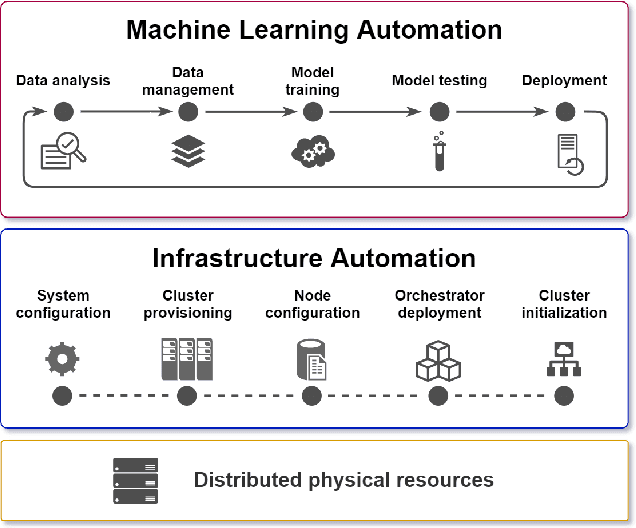
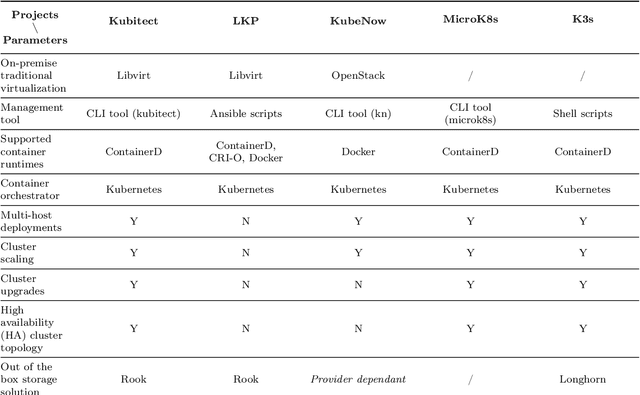
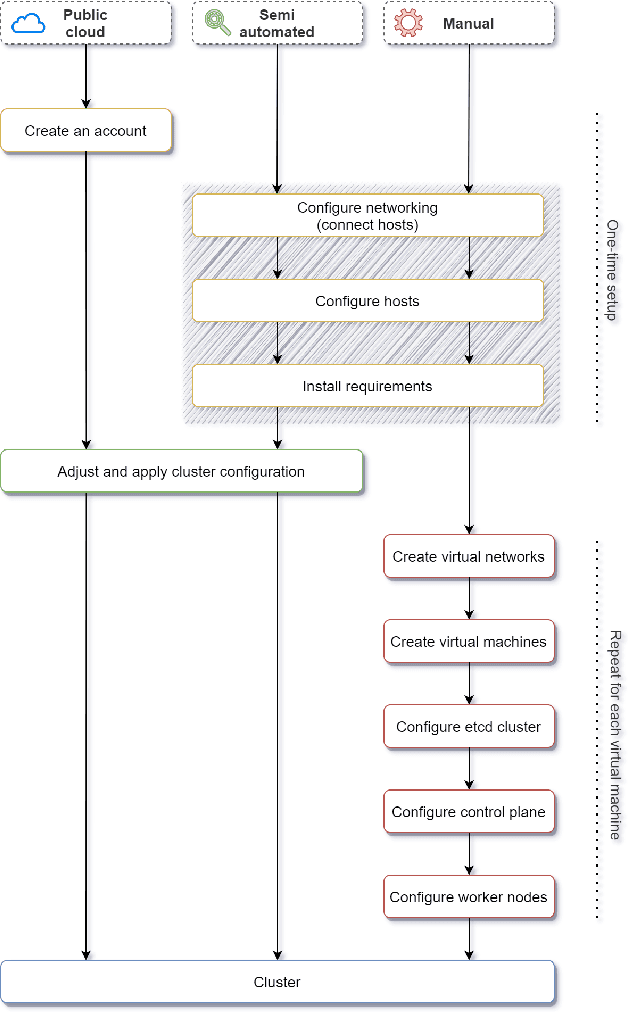

Abstract:Artificial Intelligence (AI) technologies are moving from customized deployments in specific domains towards generic solutions horizontally permeating vertical domains and industries. For instance, decisions on when to perform maintenance of roads or bridges or how to optimize public lighting in view of costs and safety in smart cities are increasingly informed by AI models. While various commercial solutions offer user friendly and easy to use AI as a Service (AIaaS), functionality-wise enabling the democratization of such ecosystems, open-source equivalent ecosystems are lagging behind. In this chapter, we discuss AIaaS functionality and corresponding technology stack and analyze possible realizations using open source user friendly technologies that are suitable for on-premise set-ups of small and medium sized users allowing full control over the data and technological platform without any third-party dependence or vendor lock-in.
Self-supervised Learning for Clustering of Wireless Spectrum Activity
Sep 22, 2022

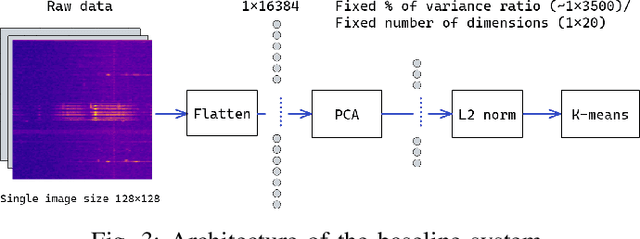
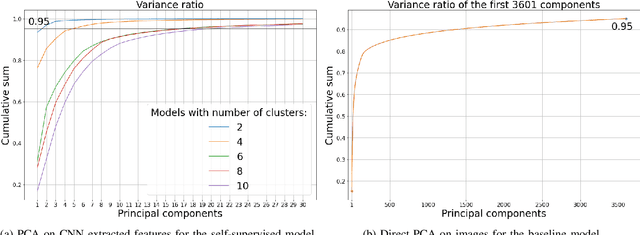
Abstract:In recent years, much work has been done on processing of wireless spectral data involving machine learning techniques in domain-related problems for cognitive radio networks, such as anomaly detection, modulation classification, technology classification and device fingerprinting. Most of the solutions are based on labeled data, created in a controlled manner and processed with supervised learning approaches. Labeling spectral data is a laborious and expensive process, being one of the main drawbacks of using supervised approaches. In this paper, we introduce self-supervised learning for exploring spectral activities using real-world, unlabeled data. We show that the proposed model achieves superior performance regarding the quality of extracted features and clustering performance. We achieve reduction of the feature vectors size by 2 orders of magnitude (from 3601 to 20), while improving performance by 2 to 2.5 times across the evaluation metrics, supported by visual assessment. Using 15 days of continuous narrowband spectrum sensing data, we found that 17% of the spectrogram slices contain no or very weak transmissions, 36% contain mostly IEEE 802.15.4, 26% contain coexisting IEEE 802.15.4 with LoRA and proprietary activity, 12% contain LoRA with variable background noise and 9% contain only dotted activity, representing LoRA and proprietary transmissions.
On Designing Data Models for Energy Feature Stores
May 09, 2022
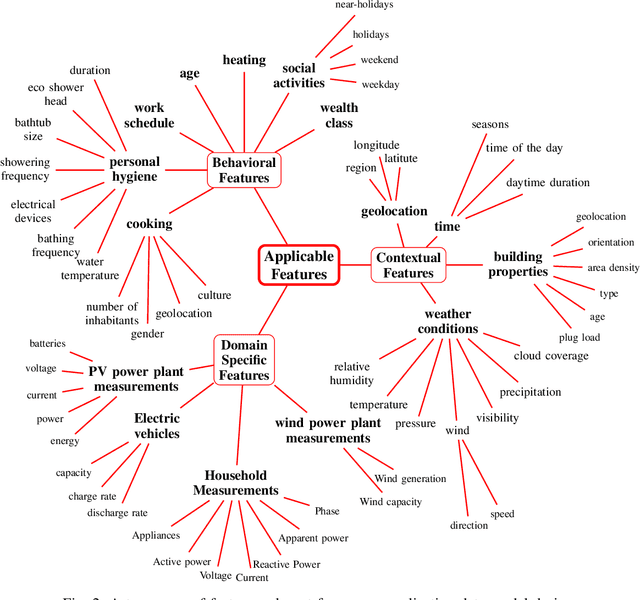
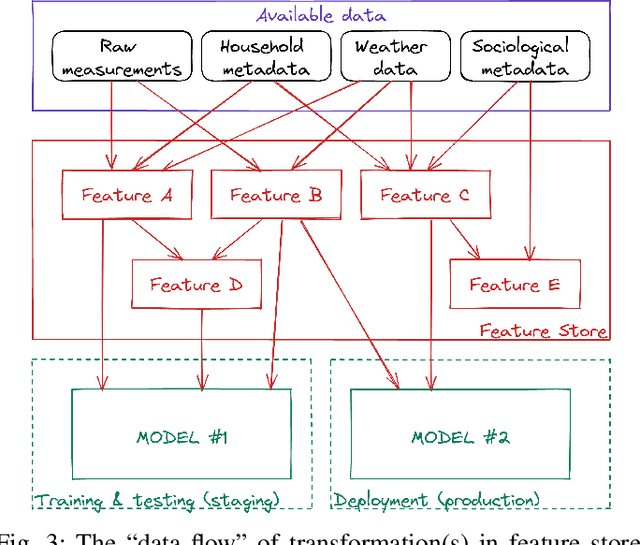
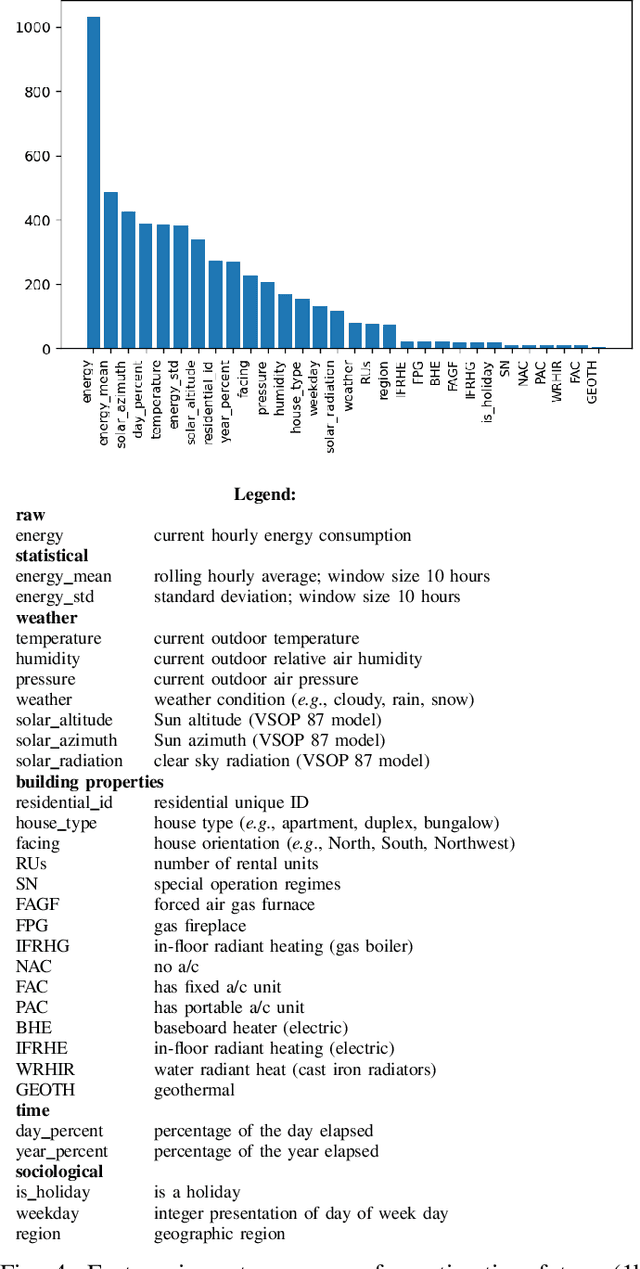
Abstract:The digitization of the energy infrastructure enables new, data driven, applications often supported by machine learning models. However, domain specific data transformations, pre-processing and management in modern data driven pipelines is yet to be addressed. In this paper we perform a first time study on data models, energy feature engineering and feature management solutions for developing ML-based energy applications. We first propose a taxonomy for designing data models suitable for energy applications, analyze feature engineering techniques able to transform the data model into features suitable for ML model training and finally also analyze available designs for feature stores. Using a short-term forecasting dataset, we show the benefits of designing richer data models and engineering the features on the performance of the resulting models. Finally, we benchmark three complementary feature management solutions, including an open-source feature store.
Dimensionality Expansion and Transfer Learning for Next Generation Energy Management Systems
Apr 06, 2022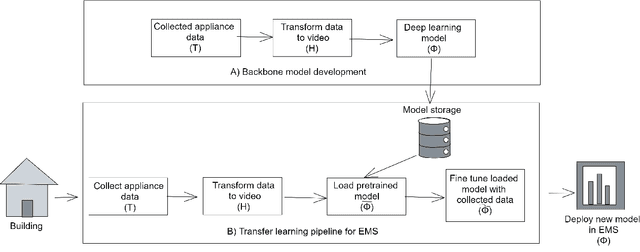
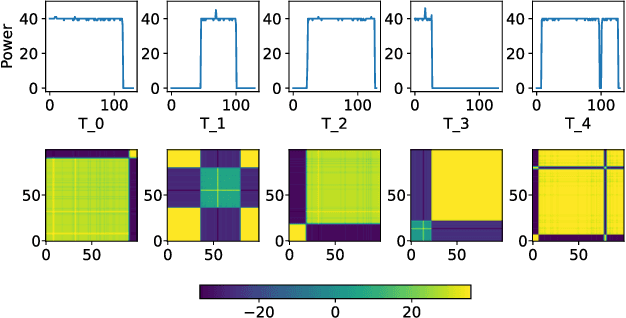

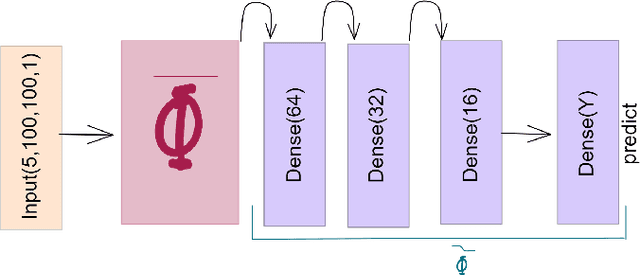
Abstract:Electrical management systems (EMS) are playing a central role in enabling energy savings. They can be deployed within an everyday household where they monitor and manage appliances and help residents be more energy efficient and subsequently also more economical. One of they key functionalities of EMS is to automatically detect and identify appliances within a household through the process of load monitoring. In this paper, we propose a new transfer learning approach for building EMS (BEMS) and study the trade-offs in terms of numbers of samples and target classes in adapting a backbone model during the transfer process. We also perform a first time analysis of feature expansion through video-like transformation of time series data for device classification in non intrusive load monitoring (NILM) and propose a deep learning architecture enabling accurate appliance identification. We examine the relative performance of our method on 5 different representative low-frequency datasets and show that our method performs with an average F1 score of 0.88 on these datasets.
 Add to Chrome
Add to Chrome Add to Firefox
Add to Firefox Add to Edge
Add to Edge